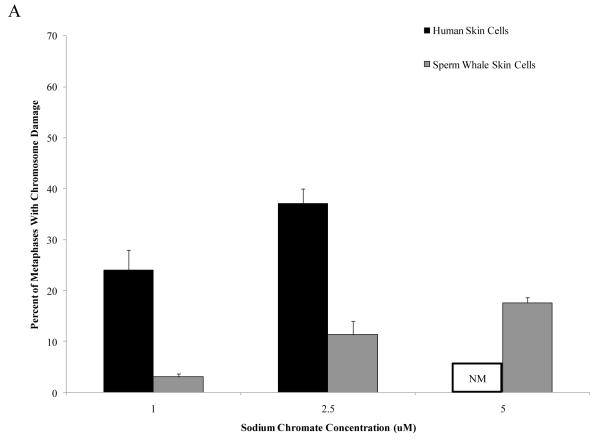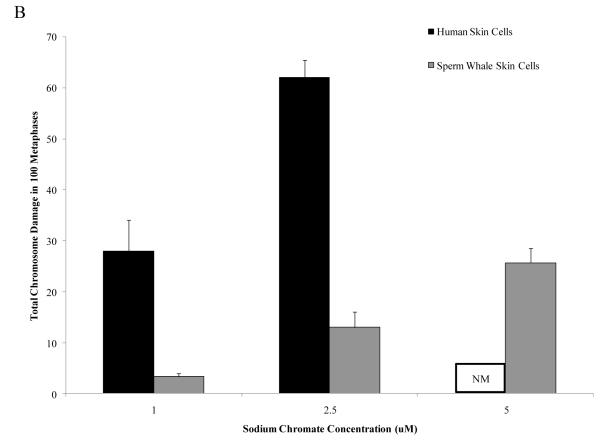Figure 3. Sperm Whale Skin Cells Are More Resistant to Soluble Cr(VI) Clastogenicity than Human Skin.
This figure shows that exposure to soluble Cr(VI) induces clastogenicity in human and sperm whale skin cells in a concentration-dependent manner. Clastogenicity was measured as a percent of metaphases with chromosome damage and total chromosome damage in 100 metaphases for each cell line. (A) Soluble Cr(VI)-induced percent of metaphases with chromosome damage. Significant differences between the two cell lines were observed (difference between sperm whale and human skin cells for percent of metaphases with damage at 1 μM was −20.2% based on the fitted values; CI= −16.7% to −23.7%; p<0.001). Untreated control values were subtracted from each concentration. The percent metaphases with damage for untreated controls was 2% for sperm whale cells and 4% for human cells. (B) Soluble Cr(VI)-induced total chromosome damage in 100 metaphases. Significant differences between the two cell lines were observed (difference for total damage in 100 metaphases at 1 μM was −24.3 based on the fitted values; CI= −19.4 to −29.2; p<0.001). Untreated control values were subtracted from each concentration. The total damage in 100 metaphases for untreated controls was 2 for sperm whale cells and 4 for human cells. Data represent the average of at least 3 independent experiments. Error bars = standard error of the mean. NM – no metaphases observed.


